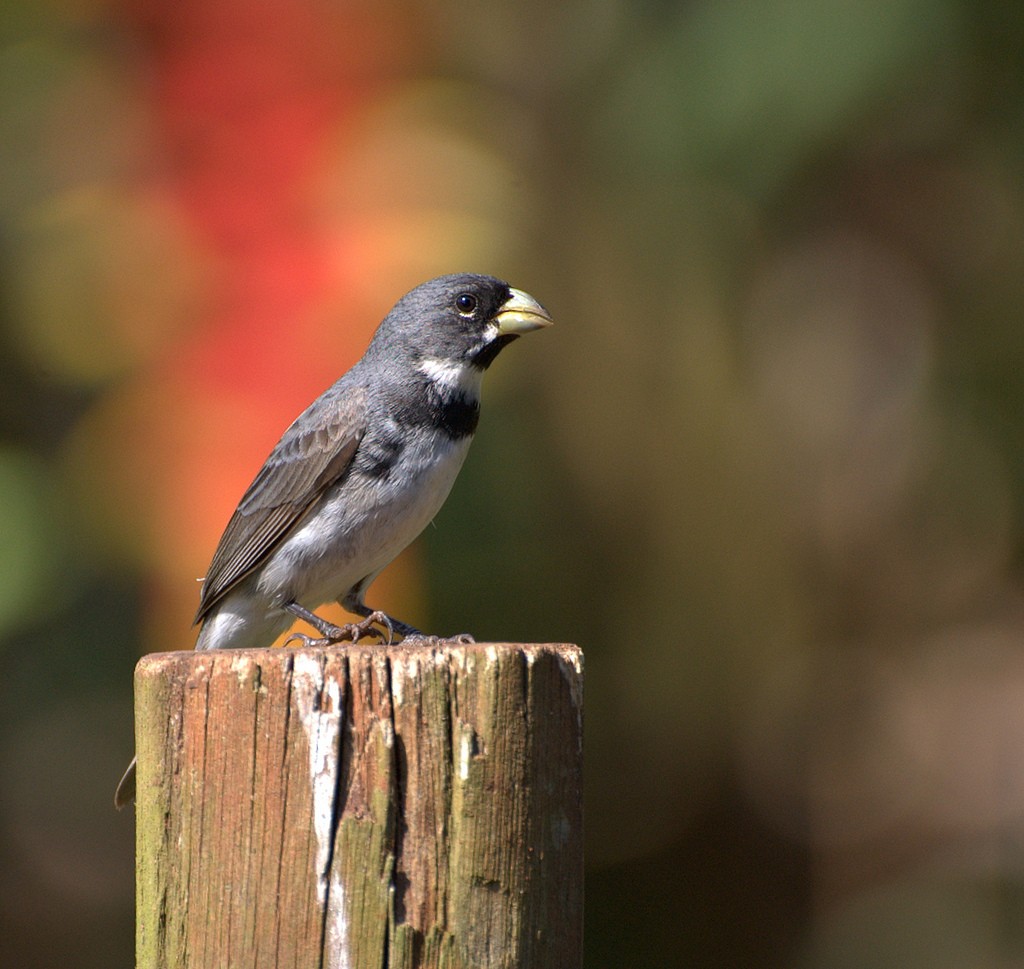Double-collared Seedeater
A species of Typical Seedeaters and Seed Finches Scientific name : Sporophila caerulescens Genus : Typical Seedeaters and Seed Finches
Double-collared Seedeater, A species of Typical Seedeaters and Seed Finches
Botanical name: Sporophila caerulescens
Genus: Typical Seedeaters and Seed Finches
Content
Description General Info
 Photo By dario sanches , used under CC-BY-SA-2.0 /Cropped and compressed from original
Photo By dario sanches , used under CC-BY-SA-2.0 /Cropped and compressed from original Description
It is a dimorphic species, with the male having a gray head and back, a black-collared throat, paired with a black band just below, across the upper whitish breast. It has gray legs, a medium length tail, and the stout bill for seed-eating. The female is less colorful. 
Size
11 cm
Nest Placement
Shrub
Feeding Habits
Double-collared Seedeater's diet consists primarily of grass seeds, such as those from cattle forage species like Brachiaria. It forages alone or in pairs, occasionally in small flocks post-breeding, utilizing both ground and vegetation perches. Double-collared Seedeater showcases a dietary adaptation to include seeds from introduced grasses.
Habitat
The habitat of double-collared Seedeater encompasses forest edges, shrubby clearings, and areas of secondary growth. It is typically found in disturbed cerrado ecosystems and old-field environments where trees or taller shrubs are present. Additionally, double-collared Seedeater adapts to human-modified landscapes, including agricultural areas, urban settings, and roadside environments within broader subtropical and temperate regions.
Dite type
Granivorous
General Info
Feeding Habits
Bird food type
Distribution Area
The species ranges from central Argentina east of the Andes cordillera northwards through Bolivia and Paraguay, and northeastwards into south-central Brazil, and southeast coastal Brazil; the species retreats into Amazonia during the austral winter. The double-collared seedeater is only found in the southern Amazon Basin, limited by the Amazon River as its northern limit. In the west Amazon Basin it is found in eastern regions of Peru, the Ucayali River areas, and mostly the eastern bank of the north-flowing river. In the southeast Basin, it ranges from the Cerrado into the upstream two-thirds of the north-flowing Araguaia-Tocantins River drainage system. 
Species Status
Not globally threatened.